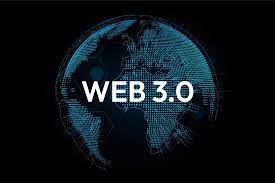Web3 offers several advantages over previous generations of the internet (Web1 and Web2). Here are some key advantages of Web3:
- Decentralization: Web3 emphasizes decentralization, which reduces reliance on central authorities and intermediaries. Unlike Web1 and Web2, where centralized entities control and govern most aspects of the internet, Web3 leverages decentralized technologies like blockchain to distribute control and ownership among network participants. This enhances transparency, reduces censorship, and promotes trustless interactions.
- User Ownership and Control: Web3 puts greater emphasis on user ownership and control of data and digital assets. With Web3 technologies, users can have ownership of their personal information, digital identities, and digital assets. They have more control over how their data is used, shared, and monetized. This shift towards user-centricity is a significant departure from the data-centric models of Web1 and Web2.
- Privacy and Security: Web3 technologies prioritize privacy and security. Blockchain networks use cryptographic protocols to ensure the integrity and confidentiality of data. Users have greater control over their personal information, and transactions can be conducted pseudonymously or anonymously. This addresses concerns about data breaches, surveillance, and unauthorized access to sensitive information.
- Interoperability: Web3 promotes interoperability by enabling different blockchain networks, protocols, and decentralized applications (dApps) to communicate and interact seamlessly. This allows the transfer of value and data across different platforms, fostering a more connected and integrated ecosystem. Interoperability encourages innovation, collaboration, and the creation of new use cases that span multiple networks.
- Programmable Money and Smart Contracts: Web3 introduces programmable money through cryptocurrencies and smart contracts. Cryptocurrencies enable programmable transactions, automated payments, and decentralized finance (DeFi) applications. Smart contracts, powered by blockchain technology, allow for self-executing agreements with predefined rules, eliminating the need for intermediaries. Programmable money and smart contracts enable new business models, financial services, and decentralized applications.
- Trust and Transparency: Web3 technologies enhance trust and transparency in digital interactions. By leveraging blockchain’s immutability and consensus mechanisms, Web3 enables transparent and auditable transactions. Users can verify the authenticity and integrity of information without relying on centralized authorities. This has implications for fields like supply chain management, voting systems, and digital identity verification.
The advantages of Web3 compared to previous generations of the internet include:
- Decentralization: Web3 is designed to be decentralized, reducing reliance on centralized authorities and giving more power to individuals. This increases transparency and reduces the risk of single points of failure.
- Trustless Interactions: Web3 utilizes blockchain technology and smart contracts, enabling trustless interactions between parties. Users can transact directly with each other without the need for intermediaries, reducing fees and increasing efficiency.
- User Ownership and Control: Web3 gives users greater ownership and control over their data and digital assets. Users have the ability to manage their own identity, control who has access to their data, and even monetize their digital assets.
- Enhanced Security: Web3 incorporates strong cryptographic principles, making it more secure than previous generations of the internet. It provides robust authentication and encryption mechanisms, reducing the risk of data breaches and unauthorized access.
- Open and Permissionless: Web3 is open and permissionless, allowing anyone to participate and contribute to the network. This fosters innovation and ensures that no single entity has ultimate control over the internet.
- Transparent and Auditable: Web3 utilizes blockchain technology, which provides a transparent and auditable record of transactions and interactions. This increases accountability and reduces the risk of fraud or manipulation.
- Programmable Money: Web3 enables programmable money through cryptocurrencies and smart contracts. This opens up new possibilities for automation, micropayments, and more complex financial arrangements.
- Global Accessibility: Web3 removes barriers that limited access to the internet in previous generations. It allows individuals to access the internet and participate in digital economies regardless of their location or socioeconomic status.
- Innovation and Collaboration: Web3 encourages innovation and collaboration through open-source development and decentralized governance models. It allows developers to build on top of existing protocols and leverage the collective intelligence of the community.
Overall, Web3 offers numerous advantages over previous generations of the internet, promoting decentralization, trustless interactions, user ownership, enhanced security, and global accessibility. These advancements have the potential to revolutionize various industries and empower individuals in new and exciting ways.
SHARE
